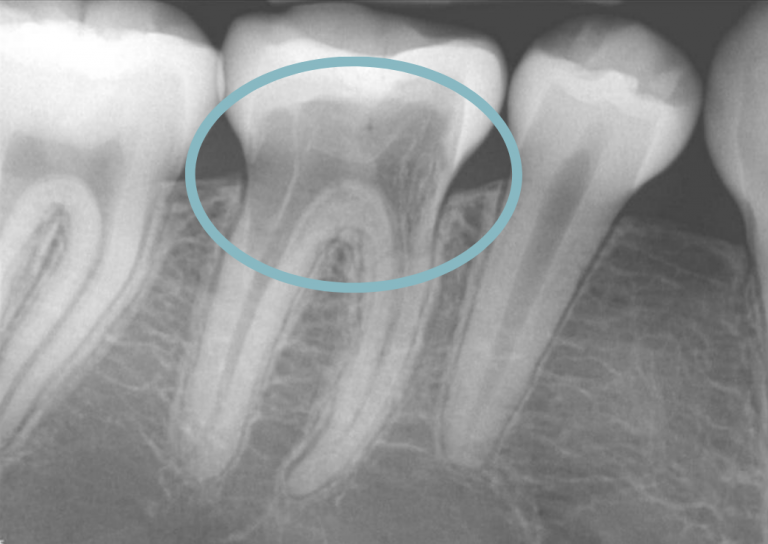While tooth decay and periodontal disease are the most common risk factors in oral health, there are some less common dangers to look out for. One of these being tooth resorption. Resorption is the process by which a material is reabsorbed. Resorption of teeth can be a normal physiological process (exfoliation of primary teeth) or a pathological one.

When it comes to teeth, this process occurs when the dentin or cementum (outer) layers begin to be absorbed by the body. Causes of pathological resorption include pressure on the root (impacted tooth or expanding cyst or tumor), inflammation and infection (periodontal, apical, and internal resorption), neoplasia, and after internal bleaching.
Another possible cause could be excessive orthodontic force on the teeth or any other trauma that can cause damage to the periodontal ligament. (Which holds teeth in place within the jaw bone) There are two different types of resorption, internal and external. They can be hard to distinguish, but it is important to determine in order to give a more accurate prognosis for the tooth.
Internal Resorption
As the name implies internal resorption begins within the tooth. More specifically in the nerve chamber. If caught in the early stages and the tooth has a good prognosis, root canal therapy is the treatment of choice. The aim with a root canal is to remove the remaining vital tissue that may be sustaining the resorptive cells.
If the resorption is purely internal the tooth often has a good prognosis after treatment. We are lucky enough to have two amazing endodontist specialists in our area. Dr. Heidi Kanning and Dr. Quinn Mitchell are both located in Sequim and we have been nothing but impressed with their results.
External Resorption
If external resorption is suspected the prognosis is usually not good. External resorption most often occurs when trauma is inflicted on the periodontal ligament. This more common occurrence can first appear as pink spots on the enamel and then progress into cavity-like areas. If not found and treated promptly, damage can occur quickly and lead to tooth loss.
Because it is not damaging the internal tissue, a root canal will not resolve the problem. Depending on the severity of external resorption, extraction may or may not be advised. This is a diagnosis determined case by case by your dentist.
Tooth Resorption
Tooth resorption overall is pretty rare. It is also usually asymptomatic for many years, and may only be detectable on an x-ray. In the case of external resorption a wait and see approach may be taken, whereas early root canal therapy may stop the progression of internal resorption. The key to success is early detection.
You probably won’t notice early signs yourself, but we can often detect areas of concern from routine x-rays. If you have had a traumatic physical injury to a tooth, it’s a good idea to let your dental professionals know as soon as possible and keep an eye on the tooth to catch any early signs of resorption.
References
Colgate – https://www.colgate.com/en-us/oral-health/conditions/immune-disorders/what-is-tooth-resorption-
Internal resorption: an unusual form of tooth resorption – https://www.ncbi.nlm.nih.gov/pmc/articles/PMC4920650/
Tooth resorption part II – external resorption: Case series –
https://www.ncbi.nlm.nih.gov/pmc/articles/PMC3659868/
Science Direct: Tooth Resorption – https://www.sciencedirect.com/topics/veterinary-science-and-veterinary-medicine/tooth-resorption
Dear Doctor: Root Resorption – https://www.deardoctor.com/library/50609/?&issue=issue28&startid=44

